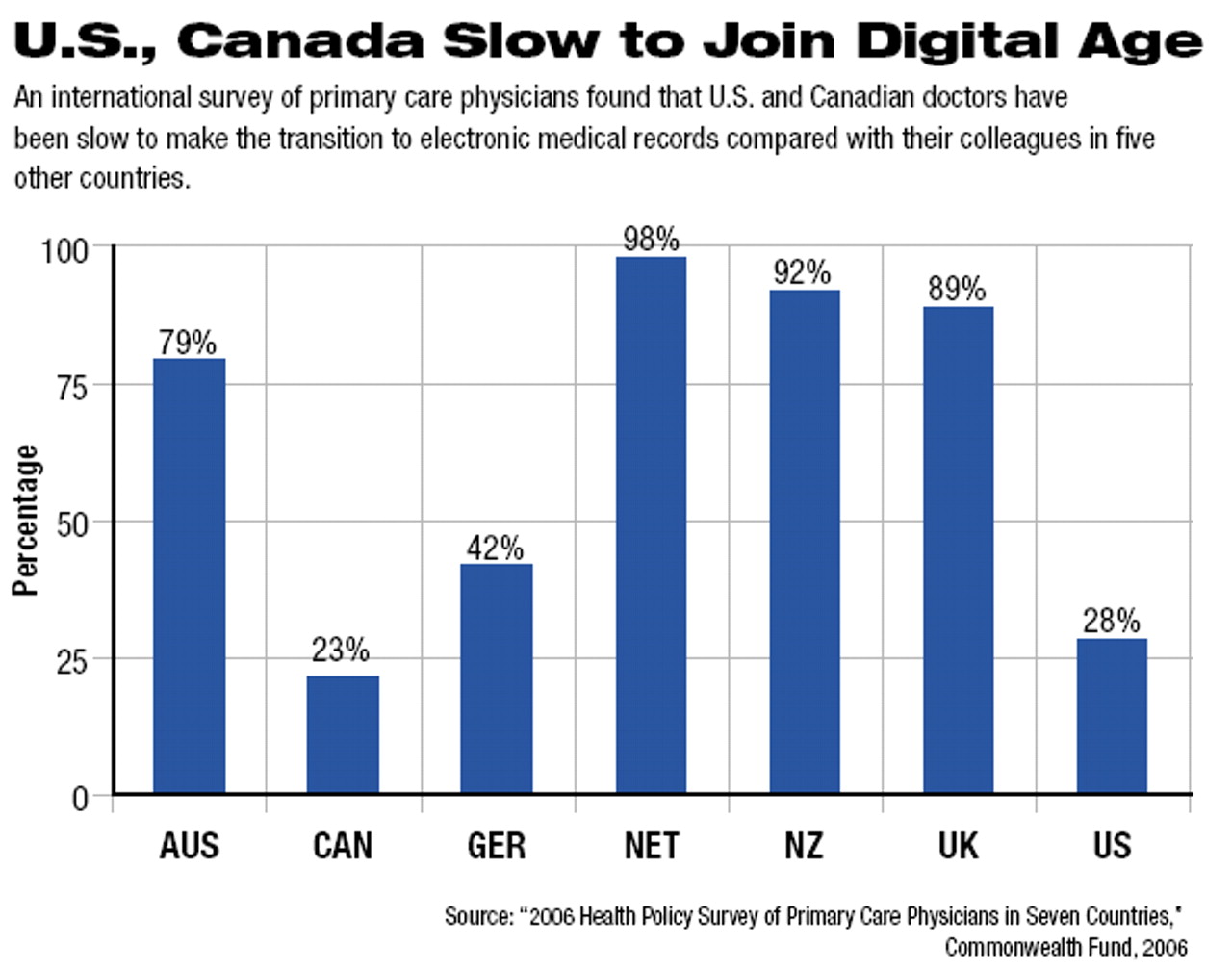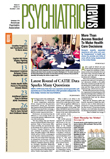Reviews of the different degrees to which industrial nations have embraced electronic patient records show that physician involvement and support are crucial for such programs to advance.
Recent research has found that the United States is far behind other Western nations in its use of electronic health records, and several European nations consistently rank among the most prolific health information technology (HIT) users. Researchers looking for lessons to encourage more widespread U.S. adoption of electronic records found physician support was critical.
“What was clear in all countries was that if you wanted to move to an electronic health records system, which brings together data from multiple sources, it is impossible without [general practitioner] involvement,” said Denis Protti, chair of Health Informatics at the University of Victoria in Canada, who has studied the issue extensively. His comments came during a Commonwealth Fund international symposium on HIT, which included the release of a survey tracking primary care physicians' use of such technology.
The Commonwealth Fund's “2006 Health Policy Survey of Primary Care Physicians in Seven Countries” determined that physicians in the Netherlands, New Zealand, and the United Kingdom led international use of electronic health records, while U.S. and Canadian physicians lagged. The 2006 survey found that 28 percent of U.S. physicians use electronic medical records, while 98 percent of Dutch physicians do so.
Speakers at the Commonwealth Fund symposium said that the longer experience of European countries with HIT demonstrated that although many factors influenced the systems' success, use of these records was more pervasive if widely embraced by physicians.
Privacy Issues Arise
In France, for example, physicians' concerns over privacy and competition were cited as a chief reason for that nation's more limited use of electronic medical records. Conversely, the support of Danish physicians was described as critical for that nation's rank among the earliest and widest adopters of HIT, according to Protti.
“Informed patients can do more when they have access to their own data.”
Danish physicians have long been strong supporters of that country's system because it was designed as a “point to point” communications network to transfer patient information quickly between physicians and between clinicians and pharmacists. The danish system has begun to encounter physician resistance only in the last two years as the government has sought to expand it to include a centralized “portal” that would allow broader access to patient records.
“Unlike some other countries that have chosen to go with a single patient record philosophy—like an electronic health record that is shared among all of the patients' clinicians—the Danes have chosen for the time being not to go that route,” Protti said.
The centralized record approach is gaining traction in some other countries, including Sweden and Spain, where all clinicians treating a patient can see shared data in a patient's file relevant to their specialty.
Dutch researcher Ib Johansen said his country's approach remains popular with physicians because they helped to design it. The quick access to patient information, he said, allows them to locate patient records more quickly and raise their income by providing e-mail consultations for many more patients in the same amount of time. Additionally, most Dutch physicians support a feature also popular with the public that allows patients to track who has viewed any of their electronic records.
“Patients' access to their own data and treatment is the highlight of the system,” Johansen said. “Informed patients can do more when they have access to their own data.”
Protti said the ability for the public to know who has accessed their data was critical to address privacy concerns.
The widely used Dutch digital communications system has provided a range of benefits, Johansen said, including a reduction in laboratory mislabeling incidents from 18 percent to 2 percent. The system's ability to notify patients and physicians electronically about needed checkups is also credited with a significant drop in the number of new cervical cancer cases.
Legislation Aims to Spur M.D. Support
The United States may improve its standing in the adoption of HIT if federal legislation supporting it gains traction in the postelection session of Congress. Legislators are looking to reconcile a House-passed HIT bill (HR 4157) and a bill (S 1418) the Senate passed in November 2005.
The legislation aims to make HIT more appealing to physicians by addressing time and cultural barriers to its adoption. The Senate measure also would help fund the purchase of such technology by authorizing $125 million for a loan program and other efforts in the first year, $155 million in the second year, and “such sums as necessary” through 2010.
The intent behind both bills is to speed the adoption of national standards for data storage and sharing of medical information. They also would codify the Office of the National Coordinator for Health Information Technology—created by executive order in 2004—within the Department of Health and Human Services.
Information on the Commonwealth Fund's “2006 International Health Policy Survey” is posted at<www.cmwf.org/newsroom/newsroom_show.htm?doc_id=420192>. HR 4157 is posted at<www.thomas.gov/cgi-bin/bdquery/z?d109:h.r.04157>; S 1418 is posted at<www.thomas.gov/cgi-bin/bdquery/z:s.01418>.▪

